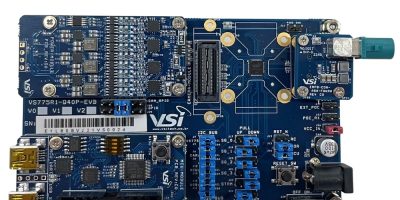Believed to be the first commercial SerDes IC that complies with the ASA (Automotive SerDes Alliance) Motion Link standard, VS775 provides high speed data transmission for automotive camera applications.
VSI develops high speed communication semiconductors for vehicles and has introduced the industry’s first commercial serialiser/deserialiser (SerDes) silicon that complies with the ASA standard. It has a data transmission rate of up to 16Gbits per second, so that the engine control unit (ECU) can quickly process high resolution image data collected by vehicle image sensors, especially electric vehicles, and autonomous vehicles.
The VS775 provides a commercial camera link semiconductor that will resolve the bandwidth concerns associated with using more high resolution image sensors in advanced autonomous vehicle designs for automotive OEMs worldwide, said VSI.
As the level of autonomous driving becomes more advanced, the number of sensors such as cameras and lidar and radar mounted on vehicles increases, which creates demand for real time, high speed data transmission. For example, it is expected that more than 20 sensors will be required for one vehicle at ASIL 4 and 5 autonomous driving, which requires high speed data transmission technology.
The ASA standardisation means that there are no interoperability issues causes by OEMs using proprietary technology, pointed out VSI.
In addition to high-speed data transmission, the VS775 features a low power design that reduces power consumption by up to 50 per cent compared to existing products, said VSI. The compact size means it is optimised for electric vehicles and automotive camera modules where there is limited space.
Steve Kang, founder and CEO of VSI, said: “As an industry-standard product, the VS775 guarantees interoperability that existing SerDes products cannot provide, which will reduce OEMs’ development periods and drive down costs. This in turn should accelerate the evolution of self-driving cars and electric vehicles and drive the future of the automobile industry.”
Currently, VSI is in the process of supplying contracts for camera link solutions for advanced driver assistance systems (ADAS) with global automotive parts suppliers (Tier 1). The company plans to expand the support range of high-speed bandwidth to 32 and 64Gbits per second through subsequent development of the VS775.
VSI is a fabless company that designs high speed communication semiconductors for vehicles and high-speed transmission of large volumes of data generated in real-time from autonomous driving and electric vehicles.
VSI is a semiconductor technology-intensive start up and its major customers are global automotive OEMs and Tier 1 and Tier 2 companies.







